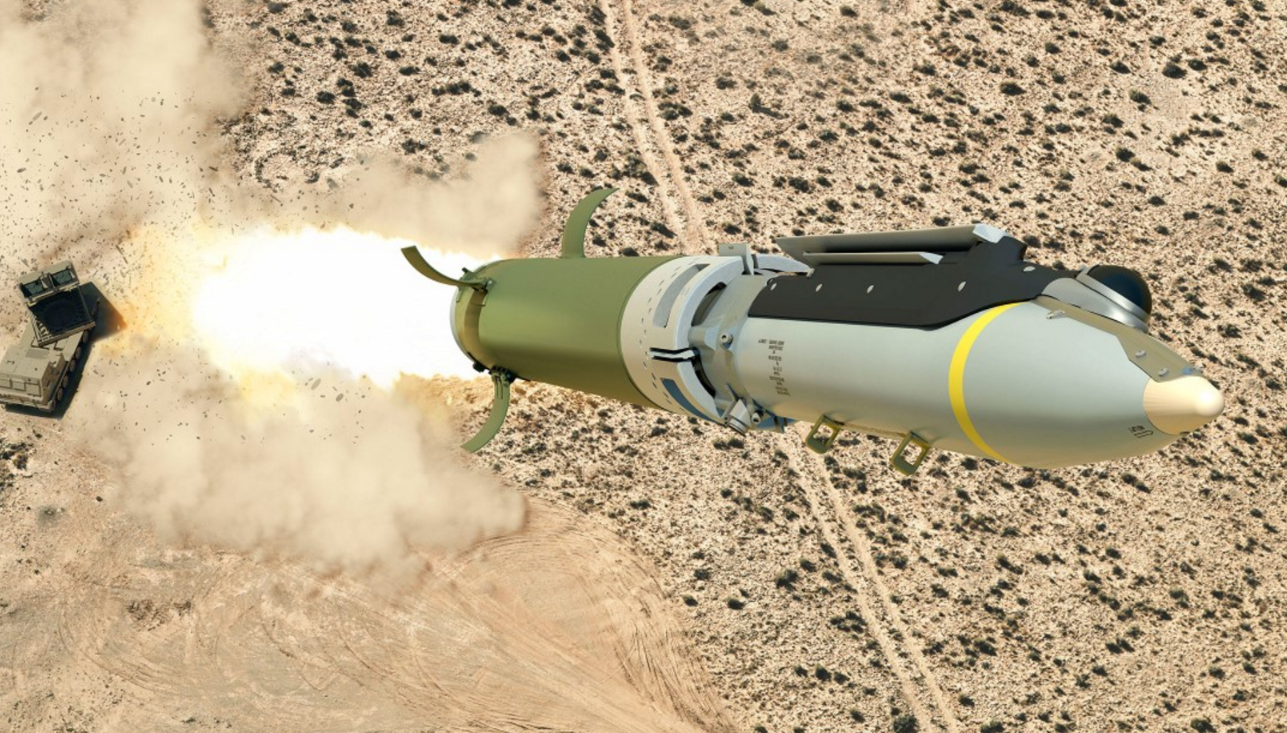2572Views 6Comments

Pakistan’s Force Multipliers (Part 4): Asymmetrical Munitions?
This is a continuation of Quwa’s series on Pakistan’s pursuit of force multiplier assets. Part one provided a context of the issue, especially in light of Pakistan’s economic constraints. Part two examined the Pakistan Air Force (PAF)’s various stand-off range weapons. In part three, we had offered an overview of the armed forces’ cruise missile programs. This article is a continuation of sorts of part two and part three in that it will continue to focus on munitions, but from the angle of what Pakistan is not pursuing, though it feasibly could should it decide otherwise.
Looking back at the previous parts of this series, it was clear that Pakistan’s ability to deploy stand-off range munitions and cruise missiles was, in large part, tied to the availability of its delivery platforms. But while these platforms, such as combat aircraft, are valuable, they are not perfect. Even an efficient and cost-optimal design will not maintain a 100% availability rate, and in the time of war – i.e. when a country’s ability to source spare parts and manage the human condition (e.g. fatigue) are stressed to new limits – a high rate must never be taken for granted.
In light of this reality, it is interesting to note that Pakistan has not (at least openly) pursued more land-based conventional strike assets. Yes, the Army does have the Hatf IX Nasr tactical ballistic missile system and Hatf VII Babur land-attack cruise missile (LACM). However, neither are meant for purely conventional use. Rather, the Nasr and Babur are the core of Pakistan’s “tactical nuclear weapons” program. In other words, Pakistan does not possess land-based precision-guided munitions for conventional mission roles.
Despite that, the concept itself is not novel. The Lockheed Martin MGM-140 Army Tactical Missile System (ATACMS) was essentially the first of this kind of system to be deployed in live combat. In recent years, Israel has also made tangible strides in the area through the development of the Long Range Attack (LORA) platform. Developed and produced by Israel Aerospace Industries (IAI), the LORA is at heart a rocket-powered ballistic missile. It carries a fairly heavy warhead (570kg) and it is capable of a maximum range of 300km. The LORA’s guidance suite is comprised of a satellite-aided inertial navigation system (INS), which imbues it with a circular error probable (CEP) of approximately 10 metres. In effect, the LORA is a ground-based precision-guided munition (PGM).
The LORA’s launch system is comprised of a four-cell canister, which can be deployed on land using an 8×8 truck as well as a surface ship. In all likelihood, IAI used an existing (i.e. relatively scaled or widely adopted) rocket design to develop the LORA, so as to control its cost. In fact, IAI’s recently revealed SkySniper – an air-launched ballistic missile – seems to be a lightweight derivative of the LORA, though this is merely analysis and not a verified fact. In any case, the cost is the central consideration, and with that, the user could be capable of fielding a relatively large number of these PGMs.
Interestingly, IAI is not the only one working to develop land-based PGMs. For example, Boeing partnered with Saab to develop the Ground-Launched Small Diameter Bomb (GLSDB). It is essentially an SDB paired with a rocket motor. While the GLSDB does not possess the same payload or range as the LORA, it is still useful enough to target sensitive installations (e.g. radars) up to 150km away. The principal aim of the SDB is to minimize collateral damage as well as be deployable from multiple launch rocket systems (MLRS). Its compact design is integral to its ease of mobility.
One may point to the Ghaznavi short-range ballistic missile (SRBM) as an analogous solution, it is essential to understand that the LORA and its contemporaries are much lighter, whilst retaining comparable range and warhead loads. In a sense, an LORA-like PGM could serve as a replacement for Pakistan’s various older SRBM designs. However, the actual value addition would be the possession of a conventional stand-off range weapon that can be produced and deployed in very large numbers, enabling the Pakistan Army to engage in long-range precision-guided strikes (including saturation strikes).
If particularly creative, Pakistan could also – in wartime – bolt PGM launch canisters aboard its fast-attack crafts (FAC) and other surface combatants. Furthermore, if the PGM’s rocket and guidance suite can be acquired or produced cheaply enough, the PAF could potentially consider its own SkySniper-like solution.
This ground-based PGM could be used in concert with the PAF’s own stand-off range strikes, enabling the Pakistani military to engage in relatively wide-reaching and heavy strikes in quick succession. It would be surprising if China is not in possession of the requisite single-stage rocket technology to make this possible, though, given the Missile Technology Control Regime (MTCR)-compliant nature, it should not be the most difficult area of technology to acquire from the market.



6 Comments
by Mohsin E.
Related news on force multiplying stand-off munitions: The US is developing a “Naval Integrated Fire Control Counterair network, or NIFC-CA” which will allow guidance of long-range SAMs by airborne assets… I remember there was a discussion here recently where I was surprised to find that no current SAM system has this capability yet… Well, apparently the US is developing this tech for the SM-6, which means the Russians/Chinese will do the same eventually… Whatever long range SAM system Pakistan acquires from China, we should work on integration of its guidance with our AWACs, because this integration will become the new standard. I doubt it’s that hard to do… I’m still surprised it took this long.
by MT
It must be challenging to mate PGM & SAM with rocket missile technology. The miniaturization of fuel engine, producing solid engines with higher Isp,advanced composite casing & sophisticated software based radar to handle single digit CEP precision isnt easy.
Isnt it possible to turn dual pulse rocket engine with addition of a solid stage small rocket & booster. The last 70-100 KM of travel can be done with decent dual pulse engine
Isnt indian K15, Shaurya quasi ballistic missiles. Ofcourse they weigh 6+ tons as compared to Israeli LORA are in range of 1.6 tons..Well in that case Prahaar of India weight 1.2 tons & have range of 150+ KM. They also follow depressed trajectory & dont go outside atmosphere, possess INS+IRNSS Connectivity.
The only component missing in Indian quasi ballistic missile(Prahaar,K15/shaurya,K4) is Software based radar(SBR) whose absense prohibits SAM kind of maneuverability,an essential feature of LORA
by Bilal Khan - Quwa
Depends. The GL-SDB is a pairing of two distinct systems (SDB and M26 rocket), but the LORA (and SkySniper) seems to be akin to any SRBM with a HE conventional warhead. The real technology jump (between the LORA and older-gen SRBMs) is the fact that the system is much lighter weight and smaller. If anything, the LORA is an example of IAI’s work on newer-gen BM propulsion and airframe technology.
by Bilal Khan - Quwa
It is very surprising that this is only being done now and not when SAMs were first integrated with data-link connectivity. Could there have been a technical issue in trying to pair a SAM missile with multiple TDL units (one for the surface radar and other for AEW&C)?
by Mohsin E.
I doubt there was any technical roadblock, probably no one thought of it. Happens all the time with ‘million dollar ideas’ e.g. I thought of the “dimpled bullet” concept only to find out that it just recently got patented and is already in development lolz. Then I wondered why it took so long for someone to think of this?! It’s so simple it could’ve been developed and tested 50 years ago, but no one thought of it… eventually someone’s gonna realize we should have dimpled surfaces on SAMs and AAMs etc. It’s such a simple and cheap way to increase aerodynamic efficiency (and thus range and speed) of any projectile (even aircraft) that could’ve been developed decades ago.
by Sami Shahid
What about the RAAD cruise missile ? Its can be launched from land and has a range of 350 km